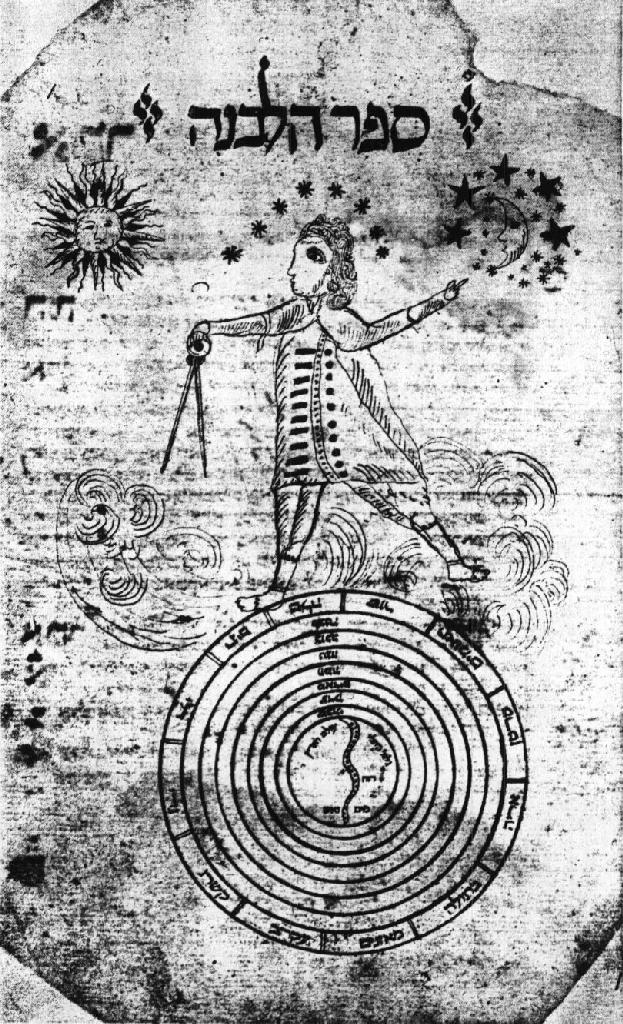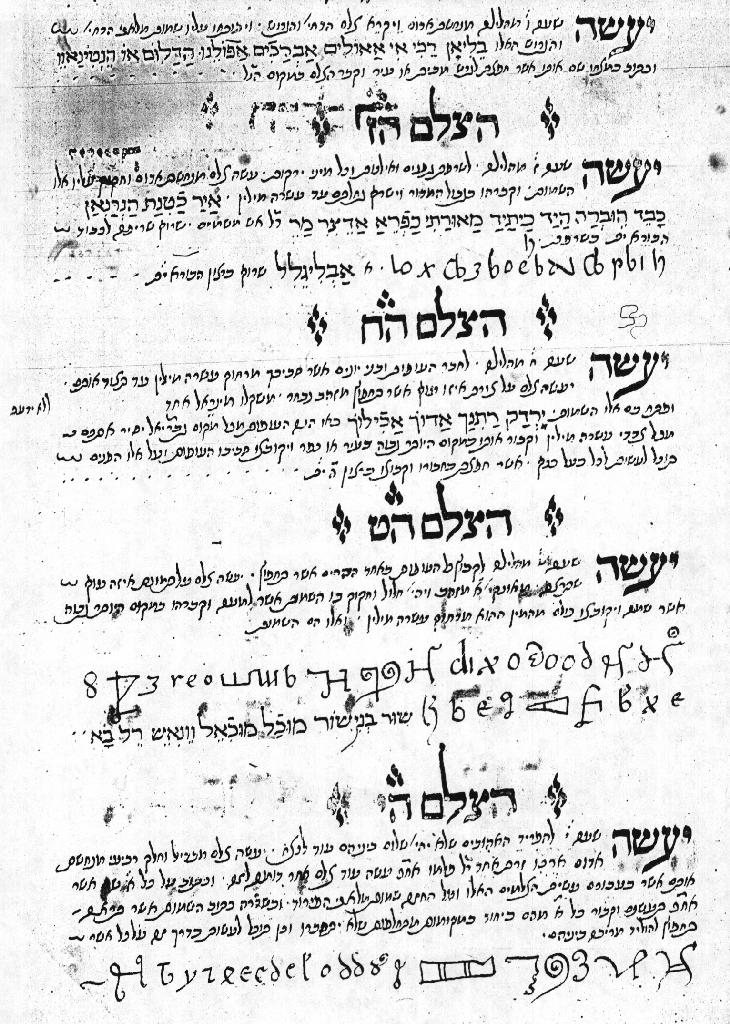Title page.

| Twilit Grotto -- Esoteric Archives | Contents | Prev | levanah | Next | Timeline |
This digital edition by Joseph H. Peterson, Copyright © 2001.
All rights reserved.
You will need a Hebrew font installed to read some of this book.
This book is extremely rare. The only copy of it I could find is in the Cambridge University Library. Since its original publication, it has come to light that the manuscript which forms the basis for the book, BL Oriental manuscript 6360, is in fact part of a larger work which had become separated. The rest of the original text is continued in Oriental MS. 14759. The two manuscripts together comprise a complete copy of Sefer Mafteah Shelomoh ('The Book of the Key of Solomon'). This is one of only three known Hebrew manuscripts of this infamous magical text known in Latin as Clavicula Salomonis.
Numerous manuscripts of the Key of Solomon exist in French, Latin, Italian, and English, purporting to be translated from the Hebrew, but the Hebrew original was thought to be lost long ago.
A second manuscript of Mafteah Shelomoh was discovered in the library of Samuel H. Gollancz, and a detailed description of it was published by his son Hermann Gollancz in 1903. He later published a facsimile edition of the manuscript (London, 1914). Gollancz' manuscript had been copied in Amsterdam in Sephardic (Italo-Spanish) cursive script.
The Or. 6360+14759 text is much easier to read than Gollancz' manuscript. According to Claudia Rohrbacher-Sticker [1] the manuscript probably dates to the seventeenth or eighteenth century, although Greenup believed it to date from the sixteenth century. Dr. Rohrbacher-Sticker also describes the text as supporting the view of Gershom Sholem and others that it is "a late Jewish adaptation of a 'Latin (or rather Italian) Clavicula text of the renaissance period'." She adds the opinion that it was probably translated into Hebrew by the scribe himself, which would make it the ancestor of Gollancz' manuscript.
There is a third manuscript of Mafteah Shelomoh in the Bibliotheca Rosenthaliana in Amsterdam.
Text in [] added by JHP.
Notes:
1. Jewish Studies quarterly, Volume 1, 1993/94 No. 3, with a follow-up
article in the British Library Journal, Volume 21, 1995, p. 128-136.
.äðáìä øôñ
THE
BOOK OF THE MOON
Edited, for the first time,
BY
A. W. GREENUP.
1912.
This pamphlet is printed for private circulation only. My interest
in its contents is due to the perusal of Dr. Gaster's article
on "Charms and Amulets" (ERE. iii. 451 ff.)
The MS. is described with some fulness by the Rev. G. Margoliouth
(to whom I am indebted for many kindnesses) in his recently-printed
Catalogue of MSS. of Kabbalah in the British Museum.
The MS. from which this work is printed is numbered Or. 6360 in the British Museum collection. It is of paper, 11 7/8 X 7 5/8, and consists of 15 leaves. The writing is Oriental Rabbinic of the 16th century. The contents of the MS. are (1) fol. 1a -6b äðáìä øôñ [Sefer ha-Levanah ('Book of the Moon')] (2) fol. 7a-11b ... úåìæîä úåìòô øôñ (3) fol. 12a-15b A fragment of äîìù äúôî [Mafteah Shelomoh ('The Key of Solomon')].
On the title page is the drawing of an astrologer, compasses in hand, with one foot placed on the Zodiacal sphere, within which are named the planets and the earth. Above the head are eight stars, whilst on the left hand top corner is a representation of the moon and on the right of the sun. The MS. was bought by the Museum Trustees from Raffallovich and Lipkin in 1902, and, as far as the first two works are concerned, is probably unique.

The contents of the äðáìä øôñ [Sefer ha-Levanah] may be summed up thus:--
In this last section occurs a mystical alphabet,
evidently drawn from the Latin, and this would suggest that the
whole work is a translation from some ancient Latin astrological
treatise, ''full of the most extraordinary medley of Greek, Babylonian,
Egyptian, and other ancient traditions" (Encycl. of Religion
and Ethics, iii. 454). The mystical alphabet occurs also in
the
úåìæîä úåìòô øôñ
[SFR POLVTh HMZLVTh] which may possibly be the second section
of the
äðáìä øôñ
[Sefer ha-Levanah]
referred to by
ñîøä
[HRMS] in the preface.
Notes:
1. [i.e. Hermes] See Steinschneider, Heb. Uebersetzungen,
p. 514.

| Twilit Grotto -- Esoteric Archives | Contents | Prev | levanah | Next | Timeline |